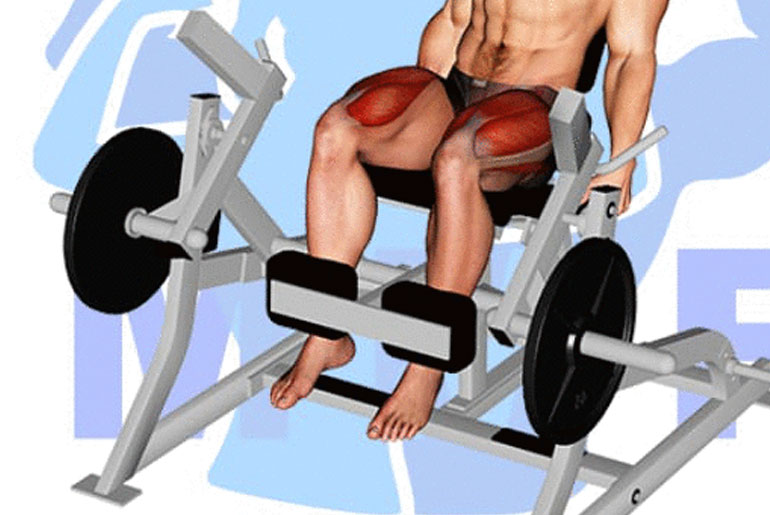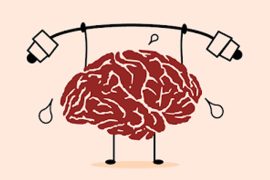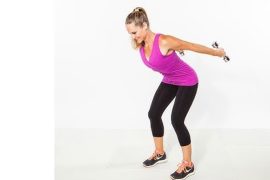A strong, toned lower body is a common fitness goal—and rightfully so, as strong legs are essential for functional movements like walking, climbing stairs, and lifting. While exercises like leg extensions are popular for isolating the quadriceps, they fall short when it comes to engaging other crucial muscles such as the glutes and hamstrings. Relying solely on leg extension may lead to muscle imbalances and limit overall leg strength development. For a more comprehensive approach, consider machine-free alternatives that target all major leg muscles. Bodyweight squats, walking lunges, Bulgarian split squats, glute bridges, and step-ups are excellent options that engage the quads, hamstrings, and glutes together, promoting balanced strength, stability, and mobility in the lower body.
What is a leg extension exercise?
A leg extension is a strength training exercise specifically designed to target and isolate the quadriceps—the group of muscles located at the front of your thighs. It is commonly performed on a leg extension machine. According to a study published in Sensors, this exercise not only promotes muscle growth in the quads but also contributes to enhanced knee joint stability.
How to perform a leg extension:
- Sit on the leg extension machine with your back firmly against the pad.
- Position your feet under the padded lever, ensuring the pad rests just above your ankles.
- Grip the side handles for support and engage your core muscles.
- Slowly extend your legs until they are fully straightened.
- Pause briefly at the top, then lower the weight back down in a controlled manner.
Though effective for quad development, leg extensions don’t activate other major lower body muscles like the glutes or hamstrings, so they are best combined with compound leg exercises for overall strength and balance.
Benefits of leg extension exercise
The leg extension exercise primarily targets the quadriceps femoris—the largest muscle group in the body, comprising the rectus femoris, vastus lateralis, vastus medialis, and vastus intermedius. These muscles play a vital role in knee extension, a movement essential for walking, running, squatting, and maintaining balance and posture. Strengthening the quads through leg extensions can improve knee stability, support joint health, and reduce the risk of injury, making it a valuable exercise for enhancing lower body function in both fitness routines and everyday activities.
Drawbacks of leg extension exercise
While leg extensions effectively isolate and strengthen the quadriceps, they have several drawbacks. A primary concern is the increased stress they place on the knee joint, which can lead to discomfort or a higher risk of injury, especially when performed with improper form or excessive weight. Additionally, because the exercise focuses solely on the quads and doesn’t engage supporting muscles like the glutes or hamstrings, it may lead to muscle imbalances if not balanced with other exercises. The need for a specialized machine also makes leg extensions less accessible and convenient. For a more functional and joint-friendly approach, consider leg extension alternatives that target multiple lower body muscles while being easier on the knees.
Leg extension alternatives:
1. Bodyweight Leg Extensions (Sissy Squats)
This variation mimics the quad activation of machine leg extensions. Performed by kneeling upright on a mat, you hinge backward at the knees while keeping the hips locked and torso straight. The further you lean back, the more your quadriceps engage. This movement requires strong knee stability and good control, making it a challenging but effective quad-dominant exercise that builds strength without any equipment.
2. Standing Leg Extensions
Standing leg extensions are a great unilateral exercise that isolates the quads without external weight. You stand tall using a chair or wall for balance, shift your weight to one leg, and extend the other leg straight out in front. Keeping your leg extended engages the quadriceps. Adding ankle weights can increase resistance, making this a fantastic at-home option for targeting the front of the thighs.
3. Reverse Lunges with Foot Elevated
This is an advanced variation of the traditional lunge, with your feet elevated on a small platform. By stepping back into a lunge, you increase the range of motion and activate the quads more intensely. Holding dumbbells adds resistance, and pushing through the front heel on the return engages the entire lower body, particularly the quadriceps, glutes, and hamstrings. It’s a functional alternative that also improves balance and coordination.
4. Wall Sit
Wall sits are a powerful isometric exercise for building quad endurance. You slide down a wall until your thighs are parallel to the floor, mimicking a sitting position without a chair. Keeping your arms off your thighs helps avoid cheating and maximizes engagement. Holding this position for 30–60 seconds builds muscular endurance, strengthens stabilizers, and challenges mental grit.
5. Plank Leg Extensions
Though primarily a core and glute exercise, plank leg extensions also require quad engagement for leg control. From a forearm or high plank position, you lift one leg straight behind you without letting the hips sway. This exercise works the entire kinetic chain — engaging the core, glutes, hamstrings, and quads — and improves stability and control, making it an excellent bodyweight movement.
6. Heel Elevated Goblet Squats
Elevating the heels in a goblet squat shifts the focus toward the quads by increasing the knee flexion angle. Holding a dumbbell or kettlebell at chest height adds resistance and helps maintain an upright posture. This position reduces the strain on the hips and emphasizes the front of the thighs. It’s especially beneficial for individuals with limited ankle mobility or those seeking more quad-dominant squat variations.
7. Resistance Band Leg Extensions
This movement closely mimics the mechanics of a seated leg extension machine. Anchoring a resistance band under a door or furniture and looping it around your ankle lets you extend the leg against tension. This provides progressive resistance as you straighten the knee, allowing for controlled quad activation. It’s portable, adjustable, and suitable for all fitness levels.
8. Bulgarian Split Squats with Dumbbells
This unilateral exercise targets the quads, glutes, and hamstrings with added intensity. One foot is placed behind you on a bench or sturdy surface while the other stays grounded in front. Holding dumbbells increases difficulty, and lowering into a deep lunge emphasizes the working leg. This is one of the most effective leg extension alternatives for building strength, stability, and muscle balance.
9. Dumbbell Leg Extension
This simple alternative replicates the seated leg extension using a dumbbell. You sit on a bench or chair, hold a dumbbell between your feet, and extend your legs while squeezing the quads. It’s essential to control the movement, both during the lift and descent, to prevent strain. This at-home version offers great isolation and can be scaled by adjusting the dumbbell weight.
10. Standing Calf Raises
Though primarily for calves, standing calf raises are essential for balanced leg development. Standing tall with feet hip-width apart, you lift your heels off the ground, contracting the calf muscles. Holding dumbbells increases intensity. While not a quad exercise, strong calves support overall lower limb function and joint stability, making this a good complementary movement in a lower-body routine.
Achieving a strong and functional lower body goes beyond just targeting the quadriceps with leg extensions. While this exercise has its merits in building quad strength and supporting knee stability, relying on it exclusively may lead to imbalances and increased joint stress. For well-rounded leg development, it’s important to incorporate machine-free alternatives that engage all major lower body muscles, including the hamstrings, glutes, and calves.
Disclaimer:
The information contained in this article is for educational and informational purposes only and is not intended as a health advice. We would ask you to consult a qualified professional or medical expert to gain additional knowledge before you choose to consume any product or perform any exercise.






